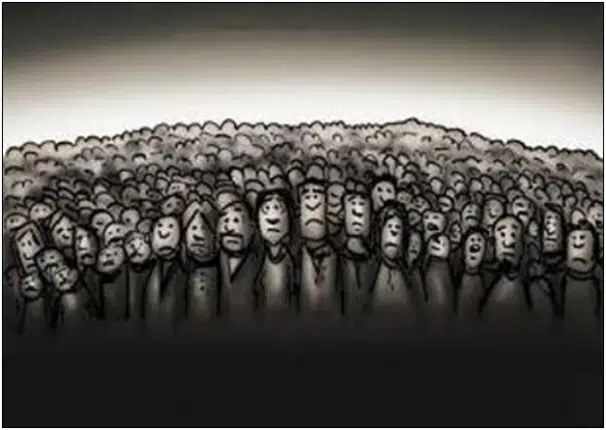
While Democrats cling to a historically modest lead in the latest generic Congressional ballot data — leading Republicans by just 2.5 points in the most recent average — the party is facing steep, double-digit declines in support among swing voters compared to 2018.
New survey data of likely midterm voters shows steep declines in support for Congressional Democrats among Black, Hispanic, and independent voters, throwing the party’s chances of retaking the House next year into question.
The survey, conducted May 14-15 among 1,012 likely voters by Rasmussen Reports, shows that if the elections for Congress were held now, only 64 percent of black voters, 37 percent of Hispanic voters, and 35 percent of independent voters would vote for the Democrat, a striking difference compared to the Democratic party’s share of these voters in past midterm cycles.
According to the survey, Democrats would win Black voters by just 44 points — 64 percent to 20 percent — where they won the Black vote by 81 points in 2018. Democrats would lose Latinos by fourteen points — 37 percent to 51 percent — a significant reversal from the party’s historic strength with Latinos. Democrats would also lose the independent vote by four points next year — 39 percent to 35 percent — after winning it in the past two midterm cycles.
This double-digit decline for Democrats is showing up in other polls as well. A recent YouGov survey shows steep declines for Democrats compared among swing voters, but also shows more undecided voters. YouGov shows Democrats winning 39 percent of Hispanics, two points more than what Rasmussen shows, and 67 percent of Blacks, three points more than Rasmussen. YouGov also shows Democrats winning just 27 percent of independents, eight points less than what Rasmussen shows.
At the time of this writing, Democrats are polling significantly below their electoral returns with Black, Hispanic, and independent voters compared to both the 2018 and 2022 midterm elections.
In 2018 under President Trump, Congressional Democrats won a sweeping 41 House seats and leveraged wide margins with swing voters to stage that coup. The party is hoping for a repeat of the 2018 blue wave, but the electoral landscape is not the same as it was in President Trump’s first term. Swing voters, specifically Latinos, Black voters and independents, have been making significant strides away from Democrats in recent elections.
In the 2018 midterms, Democrats won Latinos by 40 points — 69 percent to 29 percent — and are now poised to lose Latinos by fourteen points. Democrats won Black voters by a full 81 points — 90 percent to nine percent in 2018 — and are now on the brink of winning them by only 44 points. Democrats also won independents by twelve points in 2018 — 54 percent to 42 percent — and are poised to lose them by four points.
Even compared to how these groups voted three years ago in the 2022 midterms, the decline in affinity for Democrats is significant.
In 2022, Democrats won Latinos by 21 points — 60 percent to 39 percent. Now, Democrats are polling 23 points below their 2022 numbers. Democrats won Black voters by 73 points — 86 percent to 13 percent — and are now polling 22 points below their 2022 numbers. Democrats won independents by just two points in 2022 — 49 percent to 47 percent — and are polling fourteen points below their 2022 numbers with independents.
In recent presidential election cycles Black, Hispanic and unaffiliated voters have shifted away from Democrats, favoring an increasingly populist, America-First agenda, but the same may happen in the race for control of the House next year.
One argument against the meaningfulness of the decline in support for Democrats among swing voters — at least in off-year-election cycles — is that minorities and independents tend to vote at lower rates in non-presidential elections.
However, the Rasmussen survey was conducted among likely voters, with 93 percent saying they were likely to vote in the midterm elections, including 73 percent who said they were very likely to vote. Surveys are far from a guarantee, but the vast double-digit decline in support for Democrats is a warning signal to the party that among highly energized swing voters, Democrats are significantly underperforming.
Manzanita Miller is the senior political analyst at Americans for Limited Government Foundation.






